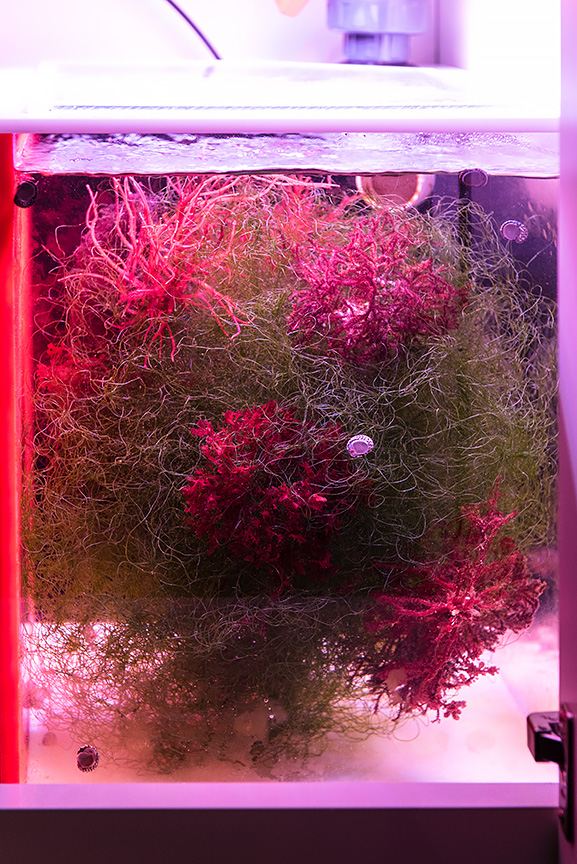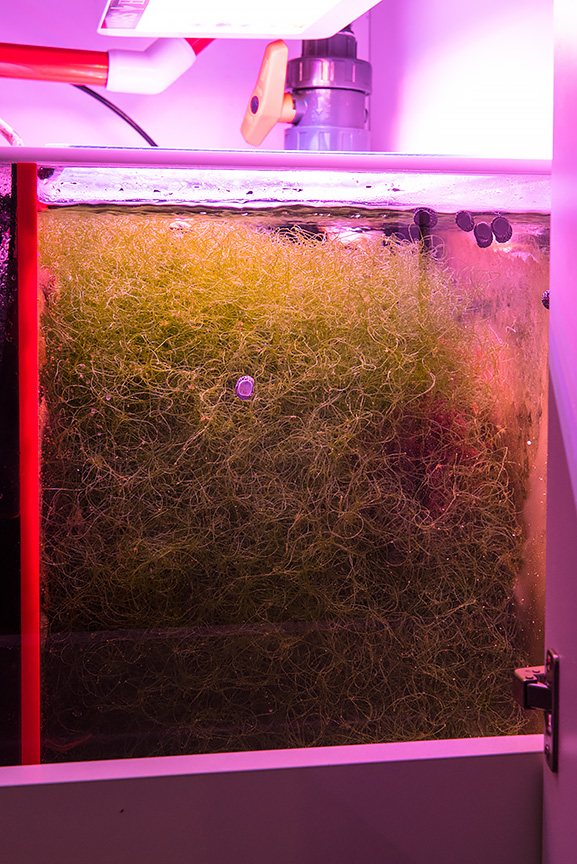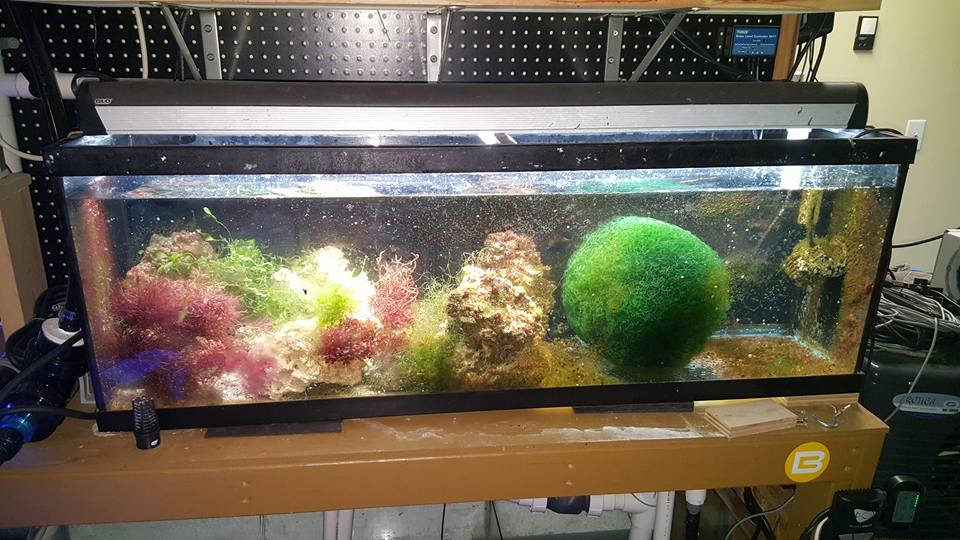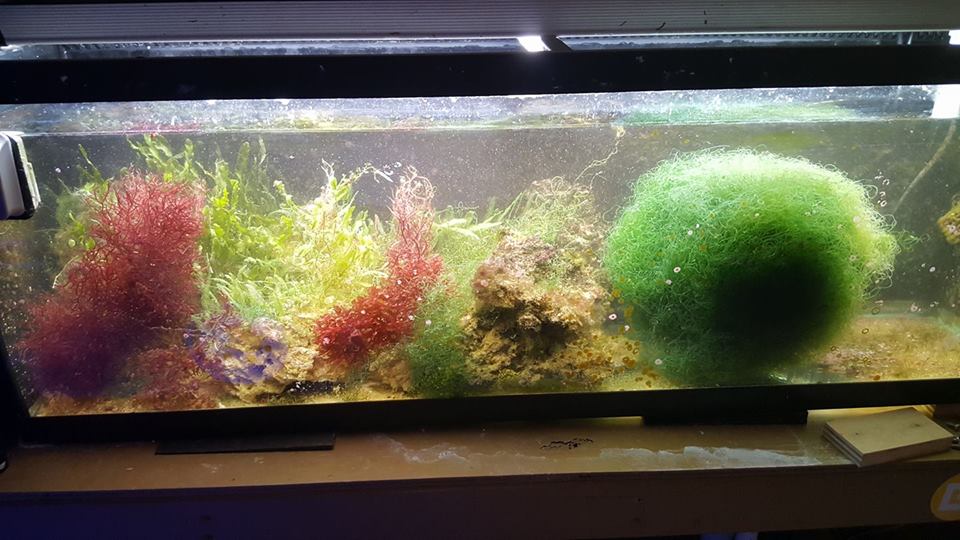For those of you who have been successfully running a full Triton based system for some time now, let's say more than a year... I thought it would be a good idea to nail down what one should expect when it comes to their refugium or "algae bed", which is probably the better term in this case, and best practices for keeping it going.
The reason I bring this up is because, as you may have seen, I've had some interesting ups and downs with mine and part of that (or maybe all of that) is because I'm used to having a refugium run a certain way, and used to maintaining a refugium a certain way, and even though I know Triton changes things up a bit, I don't think I have a full grasp on exactly how and what to expect as the system grows and matures.
I started off my Triton tank from zero. Brand new setup.
So in the beginning, the refugium looked like this and personally I think this is awesome. lol

Then my refugium grew into this... which ended up being pretty much nothing but a solid brick of chaeto.

Then from there it went downhill, crashing and it all died off.
I have the other thread going where I'm now dosing nitrates to bring them up from zero to help feed the macros.
Now they (at least the reds) seem to be hanging in there, but they are also full of nuisance algae.
Which may be fine, just not as pretty.
But if it is coming back, I obviously want to prevent it from crashing again.
For one I'll keep an eye on my nutrients and make sure they don't fall too low again.
But second, what kind of things should we expect from the algae bed?
What should it really become over time?
Do you ever trim it back a bit or do you leave it untouched forever?
I know I've seen a couple of you post that you never touch it. That's what I was trying to do when I ended up with the brick of chaeto.
But if left untouched, how do you keep the chaeto from taking over and starving out the other macros?
Or do you not use chaeto at all?
Is there anything you would change if you were starting again?
How do you keep the algae from blocking the teeth/slots on the partition wall of your sump?
I think these are just some of the questions that could use answers/opinions from those with experience, to help all the Triton newbs.
There is definitely a balance that needs to be achieved. That's one thing I've learned in this process.
So let's turn this thread into a list of tips and best practices!
Post your experiences, add pics, etc.
The reason I bring this up is because, as you may have seen, I've had some interesting ups and downs with mine and part of that (or maybe all of that) is because I'm used to having a refugium run a certain way, and used to maintaining a refugium a certain way, and even though I know Triton changes things up a bit, I don't think I have a full grasp on exactly how and what to expect as the system grows and matures.
I started off my Triton tank from zero. Brand new setup.
So in the beginning, the refugium looked like this and personally I think this is awesome. lol

Then my refugium grew into this... which ended up being pretty much nothing but a solid brick of chaeto.

Then from there it went downhill, crashing and it all died off.
I have the other thread going where I'm now dosing nitrates to bring them up from zero to help feed the macros.
Now they (at least the reds) seem to be hanging in there, but they are also full of nuisance algae.
Which may be fine, just not as pretty.
But if it is coming back, I obviously want to prevent it from crashing again.
For one I'll keep an eye on my nutrients and make sure they don't fall too low again.
But second, what kind of things should we expect from the algae bed?
What should it really become over time?
Do you ever trim it back a bit or do you leave it untouched forever?
I know I've seen a couple of you post that you never touch it. That's what I was trying to do when I ended up with the brick of chaeto.
But if left untouched, how do you keep the chaeto from taking over and starving out the other macros?
Or do you not use chaeto at all?
Is there anything you would change if you were starting again?
How do you keep the algae from blocking the teeth/slots on the partition wall of your sump?
I think these are just some of the questions that could use answers/opinions from those with experience, to help all the Triton newbs.
There is definitely a balance that needs to be achieved. That's one thing I've learned in this process.
So let's turn this thread into a list of tips and best practices!
Post your experiences, add pics, etc.











